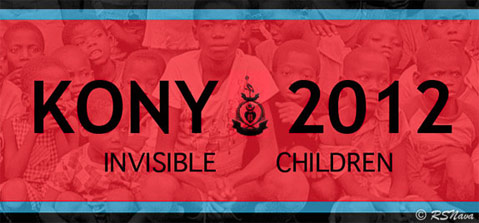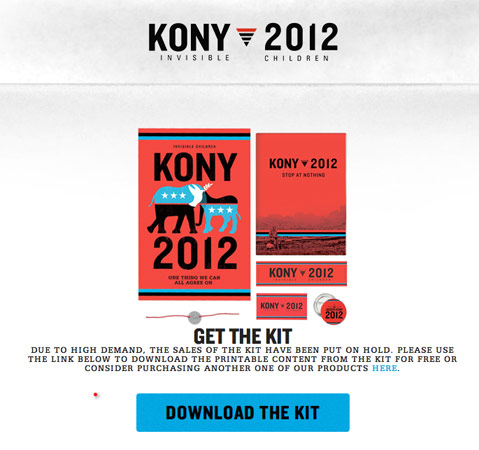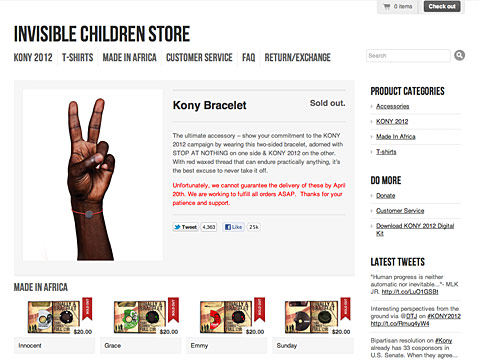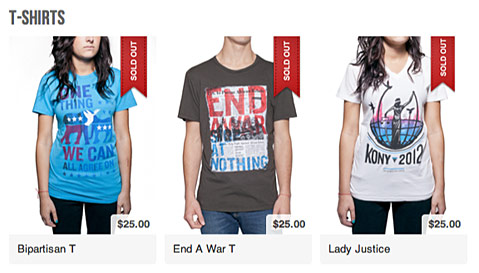The momentous release of the 30-minute online documentary KONY 2012 has been an exciting one for changemakers and documentary filmmakers alike. Its unprecedented reach, its astonishing conversion of inspiration to action, and the global conversation it has sparked all highlight the power of short film. Here, our head of Narrative Guardians, Preeti Deb, explores what we can take away from KONY 2012 from a storytelling perspective for short films:
It’s been less than two weeks since the San Diego advocacy group, Invisible Children, released their KONY 2012 video. Already the 29-minute documentary has had a staggering 84.5 million hits on YouTube. It’s been hailed the most viral video of our time. It was most liked, viewed by and shared by people aged 18 to 29 years old.Critics and humanitarian workers have criticized it for using outdated information and creating an over-simplified depiction of the current threat of Joseph Kony. And to make things worse, filmmaker Jason Russel made national headlines last week for what seems to be a nervous breakdown from the intense attention of praise and critique after the film was launched.And though I see many problems with the content of the video, I’d like to put the backlash aside for a few moments and use this opportunity to comment on what we can learn from KONY 2012.
The video has done some things very right. It’s made people feel empowered. It’s mobilized a generation that may otherwise feel disconnected from many world issues by focusing on the power of YOU. It’s given viewers a clear pathway to become part of the solution. It’s taken a complex issue and broken it down into a way that can offer a taste of the situation, so that anyone who watches the video feels like they should and can do something to stop the injustice.
Let’s see how filmmaker and co-founder of Invisible Children, Jason Russell, has done this:
1. Establish a strong personal connection: For a short film to work, it first and foremost has to resonate with viewers on a personal level. Introducing strong characters that audiences can connect with is essential. In KONY 2012, Russell does a good job of building the film around four main characters in the video.Character 1: Jason – the protagonist. The story really begins when we experience with Jason – the birth of his son. Sharing in this intensely personal, yet universal experience immediately connects us to him. And through the rest of the film, Jason speaks to us – directly and clearly – articulating his experiences, the road he’s traveled and a clear pathway to an envisioned future.Character 2: Gavin – the hopeful future. We’re already connected to Gavin, Jason’s son, since we’ve seen him being born. Later, through photographs and the narration, we get to know cute, quirky details about Gavin – we see that he likes jumping on the trampoline, making snow angels and making movies. We’re won over by his impish eyes and infectious smile. How can we help but fall in love with him? We feel mobilized to participate in a brighter future for Gavin and all our children.
Character 3: Jacob – the victim. Jacob is a young boy who Jason met in Uganda. Through his tears, Jacob tells us that he would rather die than live because he can’t bear the burden of what he’s done. He was forced to kill his parents and cause death and destruction for the rebel group, the Lord’s Resistance Army (LRA). The very scene is so powerful and the act so unthinkable – that our sympathies are immediately won over. This is the power of the testimonial.
Character 4: Joseph Kony – the man who engages in the crimes that must be stopped. The sequence of events leads us to the irreversible conclusion that the actions of Joseph Kony, the leader of the LRA, a man who kidnaps children and and perpetrates war crimes must be stopped. In the documentary, Jason makes a promise to stop him and we, as viewers, are convinced of the noble cause. When he makes a promise, viewers feel themselves identifying with and owning this promise too.
2. Offer a taste of the issue: In 30 minutes, and even more so in a one to two minute microdoc, at most you can offer a taste of an otherwise complex issue – a taste to entice the audience to engage and learn more. In Russell’s case, he does a good job of breaking the issue down for us very simply: The LRA and its leader are ruining more than 300,000 children’s lives. Girls are being turned into sex slaves and boys into child soldiers.
3. Simplify the next step of the solution: The solution presented is clear as day. The crimes of Joseph Kony have to be stopped. It’s obvious even to 7 year-old Gavin. And Jason provides a clear pathway to stop Kony. The solution is to make Kony famous by making this a topic of national interest. Immediately viewers are invested and they’re given a clear pathway to make a difference.
4. Offer a clear call-to-action: By using shots and voices of the youth who want to make a difference, we as viewers feel like we want to become a part of the movement. And Jason Russell empowers us. He tells us that by following a few simple steps we can help make Kony famous and extremely visible, so those in authority will have no choice but to stop him. The logic seems flawless. And Russell shows us the way to spread the word. He outlines five easy steps:
- Call your senator
- Go on the Invisible Children website and email the target policymakers
- Buy the action kit – so you can start wearing Kony 2012 merchandise. Note that the action kit is now sold out for now. You can download the printable kit here.
- Donate to Invisible Children
- Volunteer to spread the message through plastering the cities with posters
5. Maintain an upbeat feeling: Instead of focusing on the sadness of the crimes being committed, the filmmaker has chosen to emphasize the feeling of power and togetherness that emerges when people protest and act together. Upbeat techno and inspirational music under fast paced montages of the youth protesting together gets us excited and inspired to join the movement.
9. Paint a bright picture of the future: We learn that there are more people on Facebook than there were on the planet 200 years ago. Over and over again in his narration, Russell reminds us that this is a new world, a digital world, where justice can lie in the hands of the people. We, as viewers, feel empowered. We feel like we are a part of a brave new world. Russell drives home this fact through simple explanations, and through constant repetition.
As storytellers, we can take a few pointers from this viral sensation. Building a strong connection with characters, establishing a clear, simple message and outlining a direct call-to-action for a brighter tomorrow, are all story elements that we have already established as important and compelling for our micro-documentaries. This viral video drives the point home.





This is a very nice write-up. You’ve certainly got a lot to teach others on making videos that matter. Keep it up.
Nice to see this analyzed from a documentary filmmaker’s perspective. Lots of lessons to consider in making successful short films of our own.